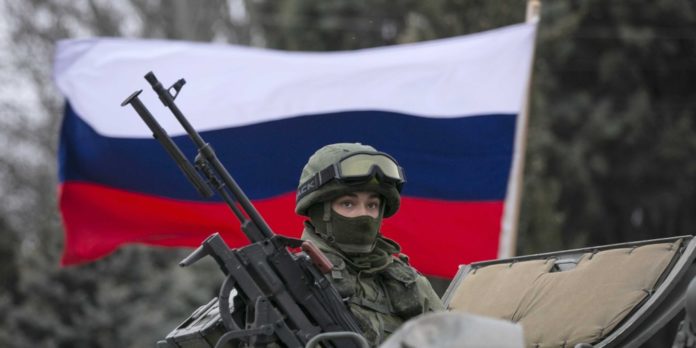Stocks opened lower this morning before reversing their losses to trade flat through noon. It was yet another intraday bullish reversal, marked by rampant dip-buying after Russia/Ukraine tensions threatened to unravel the market once more
The Dow and S&P remained below yesterday’s highs. Of the three major indexes, only the Nasdaq Composite traded for a moderate gain.
The name of the game over the last few weeks has been “volatility.” For long-term equity holders, it’s been a gut-wrenching experience. For short-term traders, it’s been equally (if not more) frustrating as stocks provided several “head fake” breakouts in either direction, with few follow-through moves.
“War is fundamentally a ‘risk off’ environment for risky assets as global investors move into sovereign bonds and other ‘safe havens’ until some kind of conclusion/new normal becomes priced in,” said Raymond James strategist Tavis McCourt.
“Everything about this is unprecedented, so about the only rational thing to say about equities is to expect volatility to continue pending a resolution.”
It’s been very difficult for investors to discern what’s actually going on in Ukraine, which has contributed to the recent bout of volatility. Western social media and mainstream news outlets would have traders believe that Russian forces were decimated by Ukrainian defenders. The “Ghost of Kiev,” an unidentified Ukrainian fighter jet pilot, went viral on social media after claims emerged that he downed six Russian aircraft in the span of just 30 hours.
The problem is that nobody can confirm the authenticity of this story. In fact, the viral footage of a jet fighter that initially spawned the rumor was proven to be fake. The video actually came from a free-to-play video game called ‘Digital Combat Simulator,’ in which realistic air-to-air combat is portrayed.
Even after the footage was debunked, though, that didn’t stop tends of thousands of Twitter users from insisting that the story was real. That includes climate change activist Greta Thunberg who, in addition to believing in the “Ghost,” told Ukrainian civilians that they should attempt to disable Russian tanks by throwing water balloons at them.
Plenty of similar stories have come out of the Ukrainian side since then. Russia, meanwhile, has denied any claims of Ukrainian success.
The truth likely lies somewhere in between.
Recent reports from people living in Kiev suggest that the Ukrainian military has withdrawn, hiding its troops near densely populated civilian areas. This has been an effective deterrent in the past when an army faced a superior military force.
Russia won’t fire rockets into apartment buildings to take out Ukrainian military assets – something that Ukraine accidentally did when an anti-air missile struck civilian housing. This has slowed Russia’s advance dramatically.
And so, despite recent reports from the mainstream media suggesting the contrary, it still seems as though Russia’s campaign through Ukraine will result in an inevitable (but slow) victory. Kiev, for example, has been encircled by Russian forces. Instead of engaging in intense street fighting, Russia’s hoping to wait out the defenders to force a surrender.
If this strategy works, and Russia doesn’t inflict a significant number of civilian casualties, we might not see any more sanctions. Or, worse, a direct military intervention by NATO countries.
Ukraine’s military is playing the only card they have left. And, arguably, the only one they had to begin with.
Ukrainian President Zelensky hopes that Russian President Vladimir Putin will get impatient and begin leveling city blocks, causing NATO countries to send military assets into Ukraine to prevent a humanitarian crisis.
If that happens, stocks will undoubtedly crater as the risk of a WW3 scenario increases. But so far, there’s nothing to suggest that Russia will go “scorched earth” on Ukraine. And until that changes, the potential for a continued market rally off the recent lows remains very real, especially if the Fed uses the recent sanctions against Russia as an excuse to deliver a smaller-than-expected rate hike in March.







